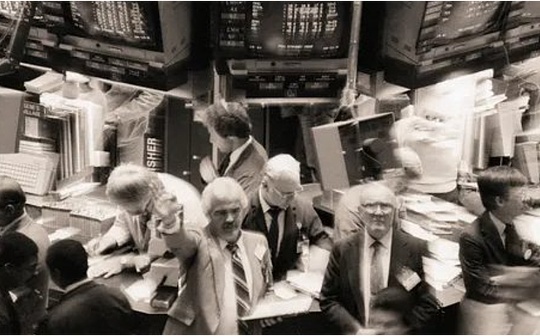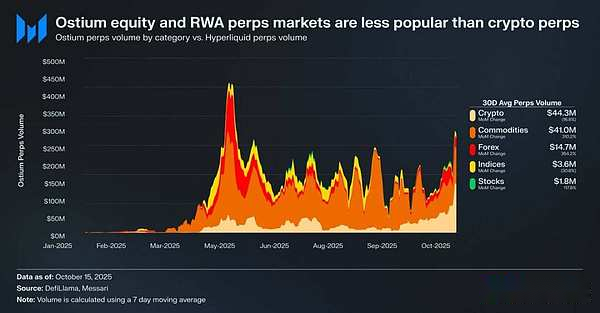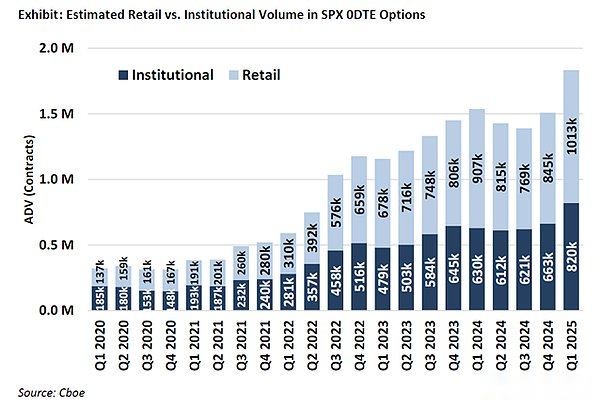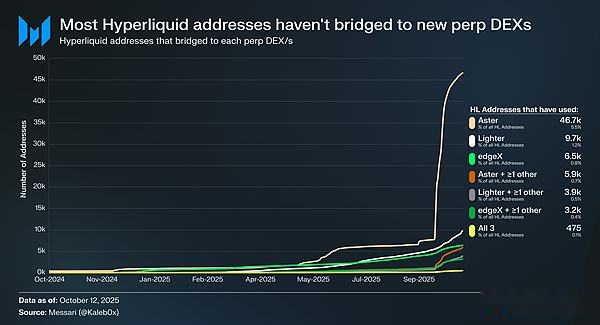
Author: Sam, Messari Research Analyst; Source: X, @0xCryptoSam
Key insights:
-
Stock perpetual contracts are still a high-potential but unproven area, has limited appeal in the on-chain market, mainly due to audience misalignment, weak demand, and more popular alternatives (such as 0DTE options).
-
For example, the average daily stock perpetual contract trading volume on the Ostium platform is only$1.8 million,andCryptocurrency perpetual contracts have a trading volume of $44.3 million, showing that market demand is weak.
-
This may imply that market demand has not yet been fully unleashed due to infrastructure and regulatory constraints.Hyperliquid’s recent HIP-3 upgrade offers the best opportunity for equity perpetual contracts, but adoption is expected to be gradual.

Stock perpetual contracts are considered the inevitable next blue ocean for the on-chain market, but current data shows that it is difficult to achieve a breakthrough in this area in the short term.Ostium, a perpetual contracts decentralized exchange focused on real-world assets (RWAs), saw average daily trading volume in equity perpetual contracts of just $1.8 million, compared with $44.3 million in cryptocurrency perpetual contracts, reflecting weak demand.
This adoption gap largely stems from audience misalignment.On-chain traders have little interest in stocks, while traders on off-chain platforms such as Robinhood can easily trade stocks and options, but not perpetual contracts.International investors may be a potential target group because they do not have direct exposure to U.S. stock markets.However, these investors may prefer to hold shares directly to obtain shareholder equity while avoiding funding fees and liquidation risk.
Equities have fewer interoperability challenges than tokens, which benefit from the convenience of synthetic packaging.To the average investor, nearly every stock in the global market has been abstracted by its individual ticker symbol in a search bar.So while perpetual contracts add permissionless and censorship-resistant features to stocks, the average stock investor is either unaware or uninterested.

The most likely users of equity perpetual contracts are retail options traders (who drive 50%-60% of 0DTE trades on the Robinhood platform).However, traditional exchanges that rely on banking services will only adopt stock perpetual contracts when the law is clear.The U.S. Commodity Futures Trading Commission (CFTC) has approved perpetual contract trading for BTC and ETH, but both have been deemed non-securities.While perpetual contracts are more intuitive than options, adoption of equity perpetual contracts may be slower than expected as the path to retail adoption is closely tied to legal clarity.

Let’s explore where equity perpetual contracts might go in the context of Hyperliquid’s HIP-3 upgrade.HIP-3 introduced a permissionless perpetual contract market, and data shows that less than 10% of Hyperliquid addresses have been bridged to Aster, Lighter, and edgeX, and even fewer users have chosen multiple perpetual contract decentralized exchanges (DEX).This shows that Hyperliquid’s funds are sticky and of high quality.Based on this data, the future of the stock perpetual contract can be predicted from two perspectives:
-
Hyperliquid users are loyal to the platform and prefer Hyperliquid over other perpetual contract DEXs regardless of asset list or features.
-
Hyperliquid users are satisfied with the current offering in the perpetual contracts market.
I think there is truth to both points of view.Hyperliquid users are likely loyal to Hyperliquid, considering they haven’t moved their funds en masse in the face of incentives.However, since most of the trading volume and open interest on Hyperliquid are concentrated in mainstream assets, similar to other perpetual contract DEXs, it is still difficult to judge whether Hyperliquid users care about market diversity, and whether stock perpetual contracts are attractive to ordinary users (and more importantly, the large investors who hold 70% of Hyperliquid’s open contracts).
Additionally, these traders may have accounts on both traditional exchanges and brokerage platforms, further limiting the potential market size for equity perpetual contracts on Hyperliquid.
It is important to note that equity perpetual contracts may not bring new open interest or trading volume to Hyperliquid, but may divert existing trading flow.
While Ostium, which has $22 billion in annual perpetual contract trading volume, and equity token wrappers like xStocks, which has $279 million in spot trading volume, have yet to experience explosive growth, this may reflect infrastructure constraints rather than a lack of underlying demand.This pattern is similar to the early growth trajectory of perpetual contracts.GMX proved that the demand for the on-chain perpetual contract market existed, but the infrastructure at the time could not support sustained trading volumes.Hyperliquid solves this bottleneck and releases potential demand.By the same logic, equity perpetual contracts may find their first scalable product-market fit on Hyperliquid once HIP-3 provides the necessary performance and liquidity.Although the current data cannot confirm this result, the precedent is worthy of attention.
The long-term potential of equity perpetual contracts is still evident compared to 0DTE options.Projects like Trade[XYZ] can take advantage of regulatory arbitrage and build an early user base before traditional exchanges enter the market.The real challenge, however, is attracting off-chain retail traders, something that has always been difficult for crypto applications.






